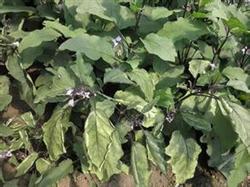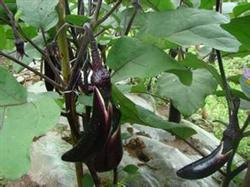Planting time and method of Chinese Cabbage
Chinese cabbage is the most common vegetable in our life, especially in the northern region, every household likes to plant some, can be eaten fresh, can also make sauerkraut or salt cabbage, Chinese cabbage taste excellent, nutritious. So when will the cabbage be planted? How should I plant it? Let's take a look.

1. Planting time
Chinese cabbage is mainly planted in autumn. according to the different sowing time of its varieties, Chinese cabbage can be divided into early-maturing varieties sowing in early and mid-August, mid-late-maturing varieties sowing in late August to early September, and late-maturing varieties sowing in late August is the most suitable.
2. Basic fertilizer for soil preparation
Chinese cabbage can be planted in both north and south, so it does not have high requirements for soil and can adapt to a variety of environments, but it is best to choose sandy loam or loam rich in organic matter and loose and fertile. The previous crop should not be Cruciferae and reasonable rotation. Fertilize the land a week before sowing, plough the land deeply and rake it finely, and make the border flat and open a good ditch when making the border to facilitate drainage and irrigation. Apply rotten organic fertilizer 5000-7000kg per mu, at the same time, match some nitrogen, phosphorus and potassium compound fertilizer 50kg, spread it evenly on the soil, combine with cultivated land, and mix fertilizer and soil evenly.
3. Sowing and raising seedlings
The excellent seeds with strong stress resistance, strong cold resistance and no disease can be sowed by strip sowing, hole sowing and machine sowing, and the suitable sowing method can be selected. The amount of sowing per mu is about 0.5kg. Control the row spacing when sowing, if the climate, soil and other conditions are good, it can be properly close planting, otherwise it should be sparse planting. After the seeds germinated, keep the soil moist and speed up the emergence of seedlings. When growing to 2-3 or 4-5 true leaves, interseedling and supplementary seedlings were carried out respectively, and some weeds, diseased seedlings and weak seedlings were removed.
4. Colonization
When the seedlings grow to have 5-6 true leaves, transplanting can be carried out. Choose a sunny afternoon when transplanting, try to avoid the strong sun at noon, and increase the survival rate. Similarly, according to the density of varieties and soil, watering immediately after transplanting to keep the soil moist, and then watering every morning and evening for 3 consecutive days, in order to slow down the seedling to keep alive.
5. Field management
The yield of Chinese cabbage is extremely high, so it needs a great amount of fertilizer, in addition to applying sufficient base fertilizer during soil preparation, but also timely topdressing. Generally, there is no need for topdressing after the application of sufficient base fertilizer at the seedling stage. If there is no sufficient base fertilizer, ammonium sulfate can be applied per mu, sprinkled on both sides of the seedling, do not directly apply to the root system, so as not to cause root burn, watering immediately after fertilization, so that the fertilizer can be quickly absorbed. After transplanting, the second fertilizer was also topdressing 15-20 kg of ammonium sulfate, ditching and watering; the third time in the rosette stage, topdressing 30 kg of ammonium sulfate and 15 kg of calcium superphosphate combined with soil cultivation; the fourth time in the heading stage, topdressing 15-20 kg of ammonium sulfate. Watering is also extremely important, depending on the climate and soil. Water should be controlled at the end of the rosette and watered after the third topdressing. When it comes to heading, Chinese cabbage has a great demand for water and needs to keep the soil moist at all times.
The above are the planting time and methods of Chinese cabbage. I hope it can help you. If you want to know more about Chinese cabbage planting, please follow us.
- Prev

Key points of eggplant cultivation techniques
Verticillium wilt 1 symptom recognition 1.1 Verticillium wilt eggplant Verticillium wilt can occur in all growth stages, but the disease is the most serious in the fruiting period, and the disease develops from bottom to top or from one side to the whole plant. In the early stage of the disease, the lower leaves turned yellow and gradually developed to the whole leaf. The early diseased leaves wilted during the day and recovered sooner or later.
- Next

Eggplant leaves need to pay attention to the "five look" principle
A look at the variety of leaf cutting on the ability to branch strong, luxuriant eggplant varieties, can cut more leaves; on the ability to branch poor, branches and leaves of eggplant varieties, should be less or not cut leaves. Second, the seedling potential is too high, and the plants that grow luxuriantly can cut more leaves to keep the leaves sparse and uniform; the cultivation is sparse, ventilated and transparent.
Related
- Where is it suitable to grow horseradish in China? it is expected to see the middle altitude horseradish in Alishan.
- How to prevent tomato virus disease reasonably? (Control methods included)
- Many people like to plant towel gourd on the balcony. What are the main points of this method and management?
- What crops can chili peppers be mixed with?
- Fertilization techniques and matters needing attention in Tomato
- What are the grafting techniques for peach seedlings in spring?
- Harm and control methods of root swelling disease of Chinese cabbage
- What are the pests of sweet potatoes? How to prevent and cure it?
- Symptoms, causes and Control methods of navel Rot in Tomato
- The cause of "Cucumber rotten bibcock" in Farmers' planting Cucumber and its Control Plan

